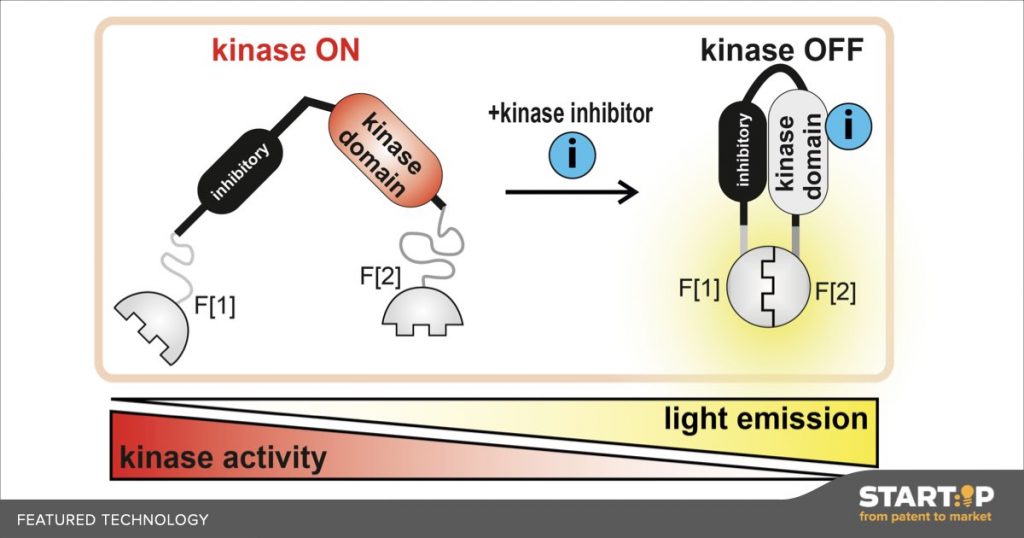Many cancers are driven by hyperactive cell signaling proteins, known as kinases. Drugs that inhibit these kinases make attractive anticancer therapies. A bottleneck for kinase inhibitor development is being able to test whether inhibition is effective, for which current testing methods are inadequate. This method directly measures kinase activity in live cells, to better assess potential kinase inhibitors.
START:IP
Technologie Kurzbeschreibung (nur Englisch)
Cell-based test for kinase inhibitors
Simple, direct, cell-based test for kinase inhibitor development
Bookmark2
Current methods for testing kinase inhibitors are severely limited. Most commonly, kinases are studied in test tubes instead of cells, meaning that the results are not physiological. If they are studied inside of cells, one can only study kinase activity by looking at possible downstream cell signaling events, which are not only indirect but could also be non-specific for the inhibitor acting on the kinase. These researchers have developed a cleverly simple way to directly measure whether kinases are inhibited. The technique takes advantage of the fact that kinases change their structural conformation from open to closed when they are inhibited. This change from open to closed is detected by attaching another protein to the kinase, which is luminescent (produces light). The luminescent protein is split in half in the open (kinase active) conformation, so it doesn’t glow unless the kinase is in the closed (kinase inhibited) conformation. These luminescent protein-plus-kinase engineered fusion proteins are easy to produce and can be put into any type of cell, which means that the kinase activity can be measured in real live cells. An extra unique advantage of this method is the capability to engineer mutant kinases, such as the ones commonly found in cancer. So, one could test inhibitors for a specific cancer situation, even in a cancer cell! Taken together, this simple method is a great tool for assessing potential drugs for kinase inhibition, to ultimately improve anti-cancer drug discovery.
If you click the button and fill out the form to be „matched“ with a technology, we will introduce you to the scientist / transfer manager of the respective research institution. In this way, you immediately have the chance to receive more detailed information and to start discussions about a possible joint project.

Mit dem Laden des Videos akzeptieren Sie die Datenschutzerklärung von YouTube.
Mehr erfahren




